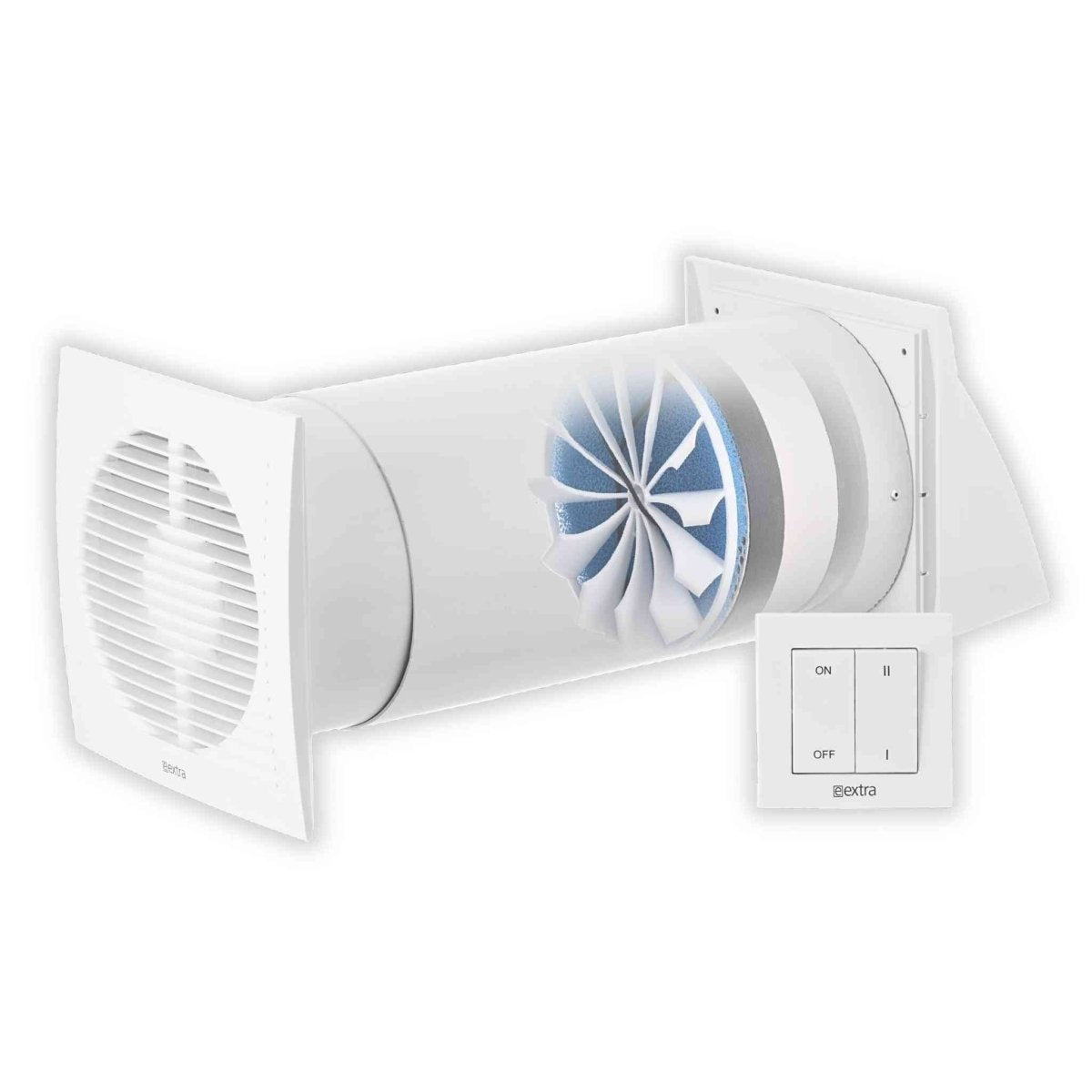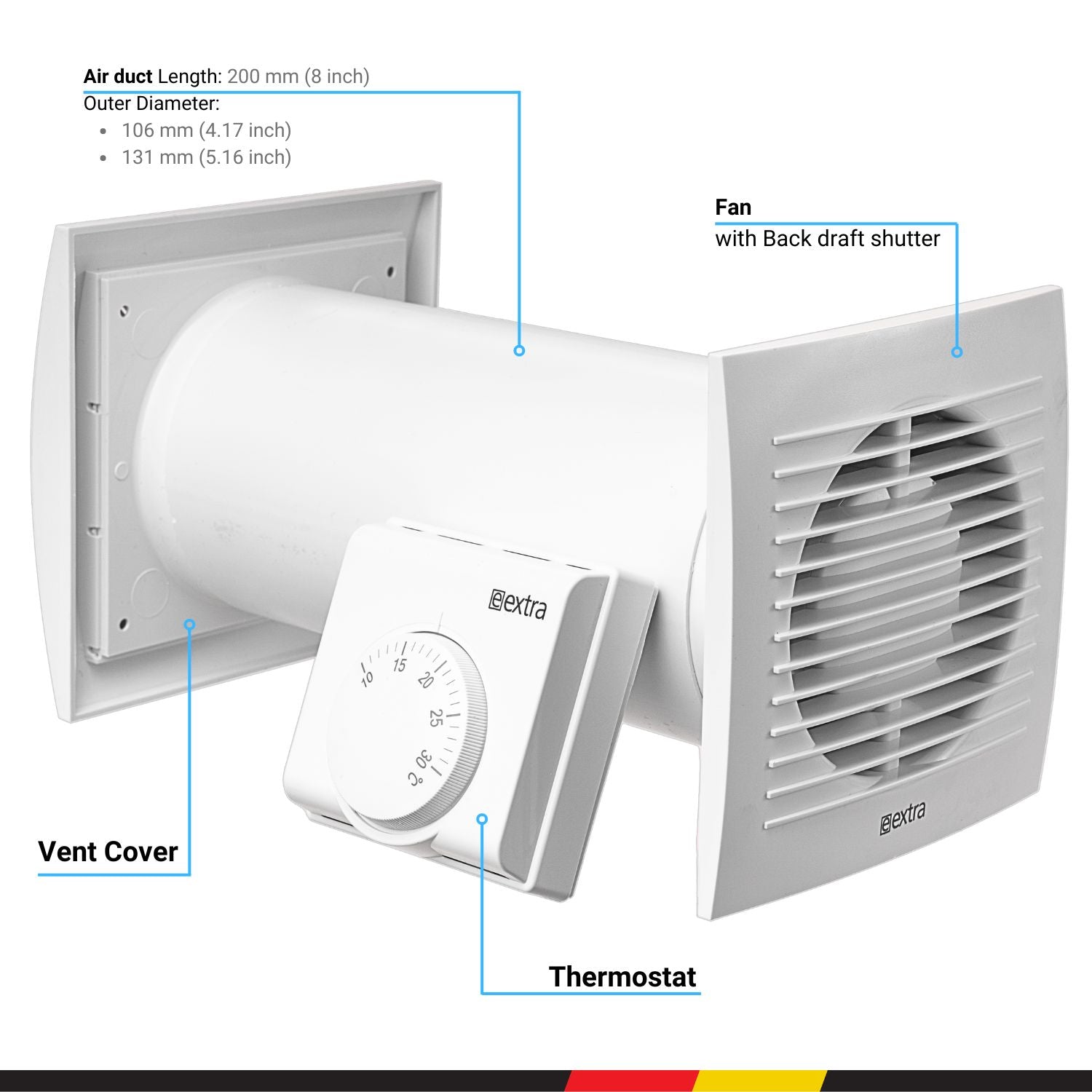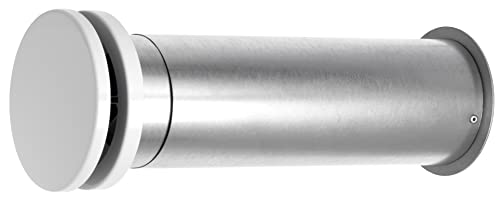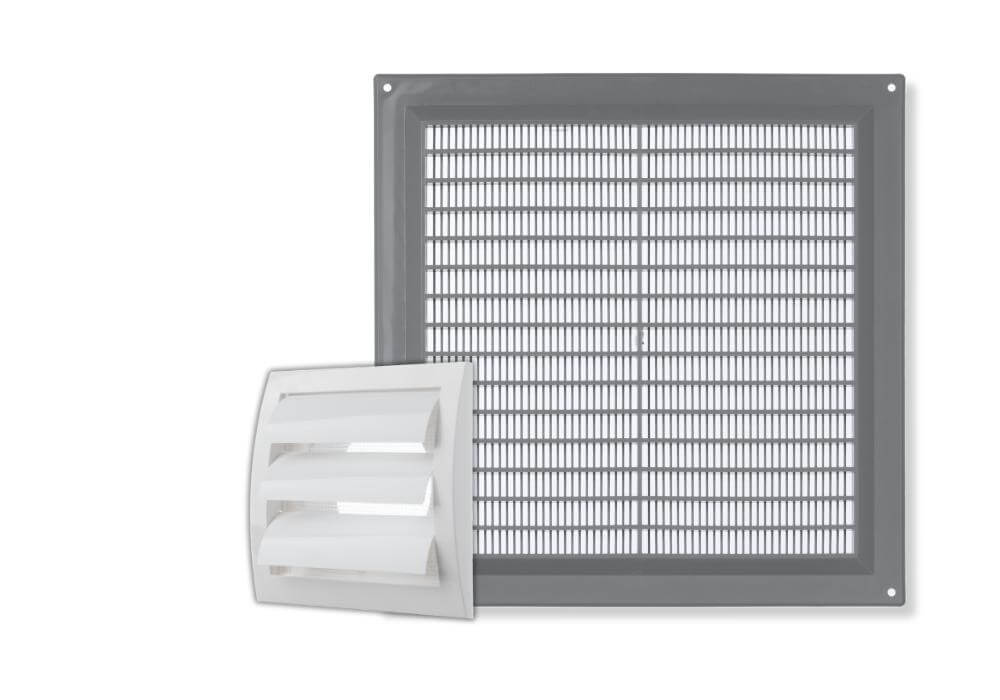
Ventilation Unit
Decentralized Single Room Heat Recovery Ventilator (MVHR) can enhance indoor air quality and avoid common issues like condensation, dampness, and mould. MVHR allows you to keep all room heat.
Heat Exchange Ventilation Fan with Thermostat is the best choice to spread the room's heat to neighbouring rooms.
The Wall Ventilation Kit provides an economical solution for combating condensation, mould, and moisture issues.
Sort by
6 products
Filters
Secure payment
Your payment information is processed securely.
Fast Delivery
Amazon, FedEx, DHL delivery serviss.
EASY RETURNS
Within 30 days of purchase date.
CUSTOMER SERVICE
We are available from monday to friday, 9am-5pm to answer your questions.
Need help?
Frequently Asked Questions
Heat Recovery Ventilation System - FAQ
What is a single room heat recovery ventilation system?
A single room mechanical heat recovery ventilation (MVHR) system is a standalone unit designed to ventilate a specific area by exchanging indoor air with fresh outdoor air. It features a heat exchanger that transfers heat from the outgoing stale air to the incoming fresh air, ensuring energy is conserved by pre-warming the fresh air, thus reducing heating demands.
This system is particularly beneficial in isolated spaces needing improved air quality and moisture control, such as bathrooms or kitchens, offering an energy-efficient solution to maintain a comfortable and healthy indoor environment without extensive ductwork.
How does a single room heat recovery ventilation system work?
A single room heat recovery unit system works by extracting stale, moist air inside the room and drawing in fresh, cooler air from outside. Through a built-in heat exchanger, the system transfers the heat from the outgoing air to the incoming air, warming it before it enters the room. This process ensures that the indoor space is continuously supplied with fresh air while minimising heat loss, making the system highly energy-efficient.
The operation is designed to improve indoor air quality and comfort by balancing ventilation with energy conservation without needing a complex network of ducts.
Is it suitable for all types of buildings?
Single room heat recovery ventilation units are versatile. They can be suitable for a wide range of buildings, including residential homes, apartments, offices, and classrooms, especially where space constraints or the building structure make the installation of larger, whole-house systems impractical.
They are ideal for targeting specific areas that require improved ventilation, such as bathrooms, kitchens, or rooms with high levels of humidity or pollutants. However, the suitability may vary based on the specific ventilation needs, building regulations, and the overall design of the building, necessitating a tailored approach to ensure optimal performance and efficiency.
How much energy can a single room heat recovery ventilation save?
A single room heat recovery system can significantly save energy by recovering heat from exhaust air to warm incoming fresh air, reducing the need for additional heating. The energy saved depends on various factors, including the unit's efficiency, climate, and insulation of the building.
Typically, these systems can recover up to 85-90% of the heat that would otherwise be lost, leading to noticeable reductions in energy costs for heating. The exact savings will vary by individual circumstances but can be substantial over time, particularly in colder climates where heating demands are higher.
Can it cool a room in the summer?
Some models offer a summer bypass feature that provides ventilation without heat recovery, providing cooler air in the warmer months. However, the heat recovery ventilation system cannot replace the air conditioner that cools the air.
Is it easy to install a single room heat recovery unit?
Installing a single room heat recovery unit is relatively straightforward, especially compared to whole-house ventilation systems. The simplicity of the installation process makes it a feasible DIY project for those with some handyman skills.
However, professional installation is recommended to ensure optimal performance and compliance with building codes. The key considerations include proper placement for efficient air exchange, secure unit sealing to prevent energy loss, and ensuring the electrical connections are safely made.
What maintenance does a single room mechanical ventilation with heat recovery (MVHR) require?
Maintenance typically involves regular cleaning of the device from dust and dirt, which is essential. Clean the filters based on dirt accumulation at least once every three months. You can clean the filters by washing them with water.
It is recommended to clean the regenerator at least once every year to ensure its optimal functionality. You can use a vacuum cleaner to get it done. Before cleaning the recuperator, switch it off and ensure it doesn't turn on unexpectedly.
Can I install a single room heat recovery unit in a bathroom?
Yes, bathrooms are common locations for single room heat recovery ventilators due to high moisture levels, helping to control humidity and reduce mold growth.
Does a single room heat exchanger system require a lot of electricity to run?
A single room MVHR system is designed to be energy-efficient, typically requiring minimal electricity to operate, often comparable to that of a low-wattage light bulb. Its primary function is to ventilate and recover heat, not to heat or cool the air, which helps keep its energy use low.
The exact electricity consumption varies by model and usage but is generally considered negligible, especially compared to the energy savings from reduced heating requirements.
Can it help reduce heating costs in winter?
Yes, a single room energy recovery ventilation system can significantly reduce heating costs in winter by recovering heat from the outgoing stale air and transferring it to the incoming fresh air.
This process reduces the need for additional heating to warm the incoming cold air, leading to lower energy consumption. The heat recovery efficiency in these systems means less energy is required to maintain a comfortable indoor temperature, resulting in noticeable savings on heating bills.
What's the difference between Single Room Heat Recovery Ventilation and Centralized Heat Recovery Ventilation systems?
Single Room Decentralised Ventilation Systems with Heat Recovery (decentralised MVHR) are designed to serve individual rooms, offering targeted ventilation and heat recovery without the need for extensive ductwork, making them ideal for retrofitting or where space is limited. They operate independently, focusing on improving air quality and energy efficiency in specific building areas.
In contrast, Centralized Heat Recovery Ventilation Systems (Centralised MVHR) are comprehensive solutions that serve the entire building through a network of ducts, providing uniform air quality and temperature control across multiple rooms or spaces. Centralised systems are more complex, typically requiring professional installation and more significant initial investment, but they offer a complete approach to ventilation and energy recovery on a larger scale.
What should I do if my single room heat recovery system is not working properly?
If your single room heat recovery system is not functioning correctly, start by checking the filters and regenerator. Ensure they are clean, as clogged filters can significantly reduce efficiency.
Next, inspect the external vents to make sure they are not blocked by debris or obstructions, which could impede airflow. If these basic troubleshooting steps do not resolve the issue, consult the user manual for specific guidance related to your model. If problems persist, it's advisable to contact a professional technician or the manufacturer's customer service.
Is planning permission required to install a single room heat recovery systems?
In most cases, planning permission is not required, but it's always best to check local regulations, especially in listed buildings or conservation areas.
What thickness does the wall require for installation?
The ventilation units accommodates wall thickness ranging from 300 - 555 mm (approximately 12 - 21 inches).
What is the required diameter of the hole in the wall to install the juice recuperator?
Pipe diameters are different for each model. E.g. For the Ø 100 mm model, the pipe diameter is 6 mm thicker - Ø 106 mm.
Note! The diameter of the hole should be a few millimetres more extensive than the pipe to install the heat recovery ventilator.
You will find the exact dimensions of the heat recovery unit in the Technical Data and Dimensions or the User Manual below.
What is the airflow in the heat recuperator in both modes?
The recuperator operates in two-speed modes. For example, our Ø 150 mm / 6.14-inch model air flow is 15 m3/h I speed mode and 27 m3/h II speed mode.
What maintenance do the decentralised ventilation units need?
Regular cleaning of the device from dust and dirt is essential. Clean the filters based on dirt accumulation at least once every three months. You can clean the filters by washing them with water.
It is recommended to clean the regenerator at least once every year to ensure its optimal functionality. You can use a vacuum cleaner to get it done.
Before cleaning the recuperator, switch it off and ensure it doesn't turn on unexpectedly.
Ventilation Unit
Steinberg14 is a safe online store for you. Buy Heat Recovery Unit or Heat Distribution Kit now. We will deliver them to you shortly from our stock. European orders are fulfilled from a warehouse in the EU.


























